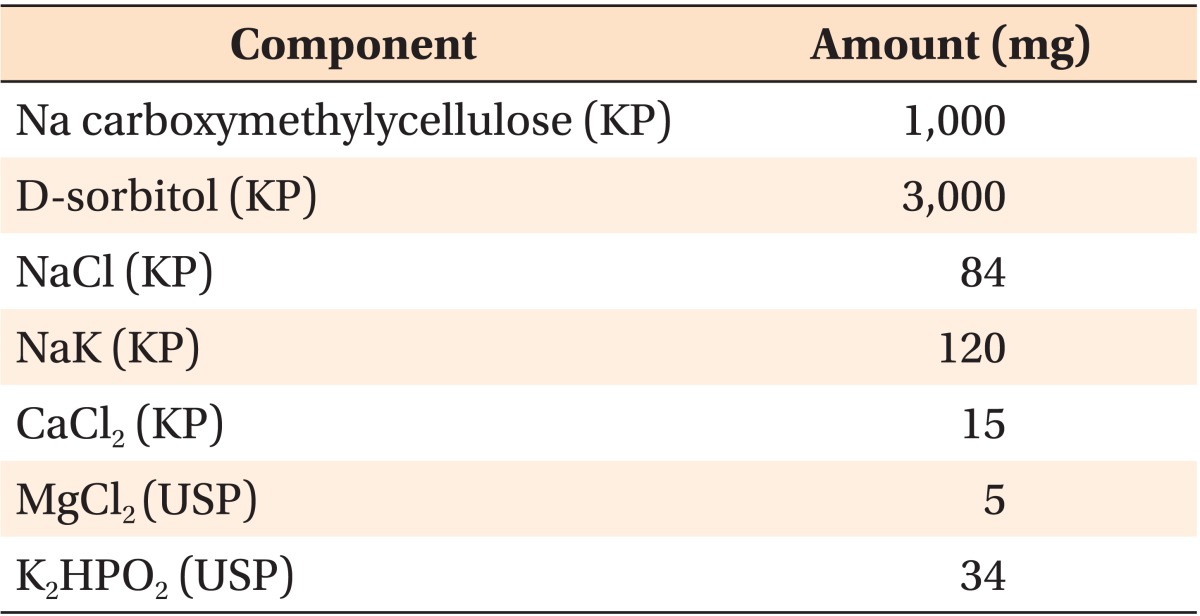1. Øgaard B. White spot lesions during orthodontic treatment: mechanisms and fluoride preventive aspects. Semin Orthod. 2008; 14:183–193.

2. Lundström F, Krasse B. Streptococcus mutans and lactobacilli frequency in orthodontic patients; the effect of chlorhexidine treatments. Eur J Orthod. 1987; 9:109–116. PMID:
3472888.
3. Chatterjee R, Kleinberg I. Effect of orthodontic band placement on the chemical composition of human incisor tooth plaque. Arch Oral Biol. 1979; 24:97–100. PMID:
45361.

4. Gorelick L, Geiger AM, Gwinnett AJ. Incidence of white spot formation after bonding and banding. Am J Orthod. 1982; 81:93–98. PMID:
6758594.

5. Artun J, Brobakken BO. Prevalence of carious white spots after orthodontic treatment with multibonded appliances. Eur J Orthod. 1986; 8:229–234. PMID:
3466795.

6. O'Reilly MM, Featherstone JD. Demineralization and remineralization around orthodontic appliances: an in vivo study. Am J Orthod Dentofacial Orthop. 1987; 92:33–40. PMID:
3300270.
7. Geiger AM, Gorelick L, Gwinnett AJ, Griswold PG. The effect of a fluoride program on white spot formation during orthodontic treatment. Am J Orthod Dentofacial Orthop. 1988; 93:29–37. PMID:
3276146.

8. Ogaard B. Prevalence of white spot lesions in 19-year-olds: a study on untreated and orthodontically treated persons 5 years after treatment. Am J Orthod Dentofacial Orthop. 1989; 96:423–427. PMID:
2816842.
9. Ogaard B, Rølla G, Arends J. Orthodontic appliances and enamel demineralization. Part 1. Lesion development. Am J Orthod Dentofacial Orthop. 1988; 94:68–73. PMID:
3164585.
10. Mitchell L. Decalcification during orthodontic treatment with fixed appliances-an overview. Br J Orthod. 1992; 19:199–205. PMID:
1390575.

11. Baysan A, Lynch E, Ellwood R, Davies R, Petersson L, Borsboom P. Reversal of primary root caries using dentifrices containing 5,000 and 1,100 ppm fluoride. Caries Res. 2001; 35:41–46. PMID:
11125195.

12. Schirrmeister JF, Gebrande JP, Altenburger MJ, Mönting JS, Hellwig E. Effect of dentifrice containing 5000 ppm fluoride on non-cavitated fissure carious lesions in vivo after 2 weeks. Am J Dent. 2007; 20:212–216. PMID:
17907481.
13. Artun J, Thylstrup A. Clinical and scanning electron microscopic study of surface changes of incipient caries lesions after debonding. Scand J Dent Res. 1986; 94:193–201. PMID:
3526528.
14. Reynolds EC. Remineralization of enamel subsurface lesions by casein phosphopeptide-stabilized calcium phosphate solutions. J Dent Res. 1997; 76:1587–1595. PMID:
9294493.

15. Shi XQ, Tranaeus S, Angmar-Månsson B. Comparison of QLF and DIAGNOdent for quantification of smooth surface caries. Caries Res. 2001; 35:21–26. PMID:
11125192.

16. Murray JJ, Shaw L. Classification and prevalence of enamel opacities in the human deciduous and permanent dentitions. Arch Oral Biol. 1979; 24:7–13. PMID:
292365.

17. Mizrahi E. Enamel demineralization following orthodontic treatment. Am J Orthod. 1982; 82:62–67. PMID:
6984291.

18. Dirks OB. Posteruptive changes in dental enamel. J Dent Res. 1966; 45:503–511.

19. Zachrisson BU, Zachrisson S. Caries incidence and oral hygiene during orthodontic treatment. Scand J Dent Res. 1971; 79:394–401. PMID:
5288673.
20. Geiger AM, Gorelick L, Gwinnett AJ, Benson BJ. Reducing white spot lesions in orthodontic populations with fluoride rinsing. Am J Orthod Dentofacial Orthop. 1992; 101:403–407. PMID:
1590288.

21. Bröchner A, Christensen C, Kristensen B, Tranæus S, Karlsson L, Sonnesen L, et al. Treatment of post-orthodontic white spot lesions with casein phosphopeptide-stabilised amorphous calcium phosphate. Clin Oral Investig. 2011; 15:369–373.

22. Bhat SS, Hegde SK, Habibullah MA, Bernhardt V. Incipient enamel lesions remineralization using casein phosphopeptide amorphous calcium phosphate cream with and without fluoride: a laser fluorescence study. J Clin Pediatr Dent. 2012; 36:353–355. PMID:
23019831.

23. Ogata K, Warita S, Shimazu K, Kawakami T, Aoyagi K, Karibe H. Combined effect of paste containing casein phosphopeptide-amorphous calcium phosphate and fluoride on enamel lesions: an in vitro pH-cycling study. Pediatr Dent. 2010; 32:433–438. PMID:
21070712.
24. Karlinsey RL, Mackey AC. Solid-state preparation and dental application of an organically modified calcium phosphate. J Mater Sci. 2009; 44:346–349.

25. Derks A, Katsaros C, Frencken JE, van't Hof MA, Kuijpers-Jagtman AM. Caries-inhibiting effect of preventive measures during orthodontic treatment with fixed appliances. A systematic review. Caries Res. 2004; 38:413–420. PMID:
15316184.
26. Silverstone LM. Remineralization and enamel caries: significance of fluoride and effect on crystal diameters. In : Leach SA, Edgar WM, editors. Demineralisation and remineralisation of the teeth. Oxford: IRL Press;1983. p. 185–205.







 PDF
PDF ePub
ePub Citation
Citation Print
Print





 XML Download
XML Download